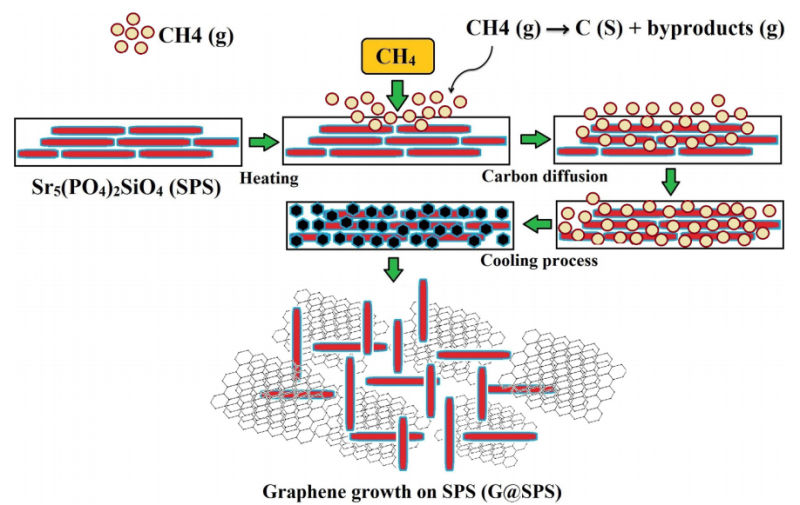Researchers Develop Novel Sr5 (PO4)2SiO4-Graphene Nanocomposites for Bone Regeneration
Date:28-05-2020 | 【Print】 【close】
For each year, millions of people have suffering from bone-related diseases such as bone defects and bone mass loss because of the tumors, trauma and abnormal growth, etc.
However, though autografts and allografts have been using for the applications in bone regeneration, they have limitations for the large recommendation in the clinical field due to donor site morbidity and immune rejections.
Hence, considerable studies have focused on the creation of biomaterials including new bioceramics, bioactive glass-ceramics in terms of nanocomposites, coatings on medical grade implants and scaffolds, to supply specific biofunctions, like osteogenesis, angiogenesis, anti-inflammation and osteoconduction.
Recently, nanocomposites with the combination of biopolymers or carbon-based materials and bioactive materials have attracted much interest to use for biomedical applications because of their similar characteristics with natural bone.
However, to the best of research knowledge, there’s no report on the generation of graphene over pure bioactive materials without using any catalyst by chemical vapour deposition method (CVD) for biomedical applications.
Prof. REN Pei-Gen’s research group from the Shenzhen Institutes of Advanced Technology (SIAT) of the Chinese Academy of Sciences, collaborated with Prof. CHENG Chun’s group from Southern University of Science and Technology (SUSTech), have developed a novel bioceramic based nanocomposites for bone regeneration and this work was published in Applied Surface Sciences.
In this study, scholars mainly focused to grow the graphene on nanosized Sr5(PO4)2SiO4 (SPS-Strontium phosphosilicate) powder by CVD process and examined its osteogenesis, angiogenesis properties for applications in bone regeneration.
The Raman analysis confirmed the formation of graphene with few layers on SPS powder with an I2D/IG ratio of 1.7877.
TEM images proved that the existence of few layered graphene in G@SPS nanocomposites and XPS analysis confirmed the peak position at 284.4 eV which assigned to the presence of sp2 hybridized carbon atoms in graphene.
The G@SPS possessed good bone-like apatite formation ability on its surface by SBF immersion and more dense deposition occurred with an increase of incubations. The cell proliferation ability of G@SPS at concentrations of 50–250 μg/ml showed the obvious effects on mBMSCs than β-TCP. The ALP and Alizarin red quantifications proved the early stage differentiation of mBMSCs and calcium depositions when treated with G@SPS respectively. Also, the alp, runx2, col1a2, ocn and opn gene expressions confirmed the potential of G@SPS on osteogenic differentiation of mBMSC. The G@SPS concentrations (50–250 μg/ml) demonstrated the significant cell proliferation of HUVECs.
Therefore, this finding provided the development of G@SPS nanocomposites with improved biological properties could act potential candidate for future bone tissue engineering applications.

Graphical representation of graphene growth on nanosized SPS by CVD process. (Image by SIAT)
Media Contact:
ZHANG Xiaomin
Email: xm.zhang@siat.ac.cn